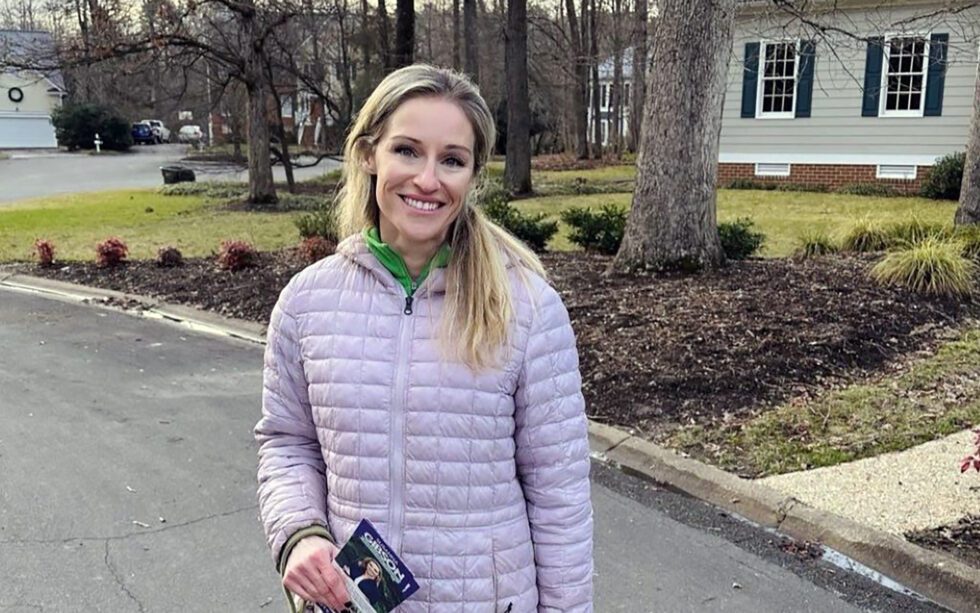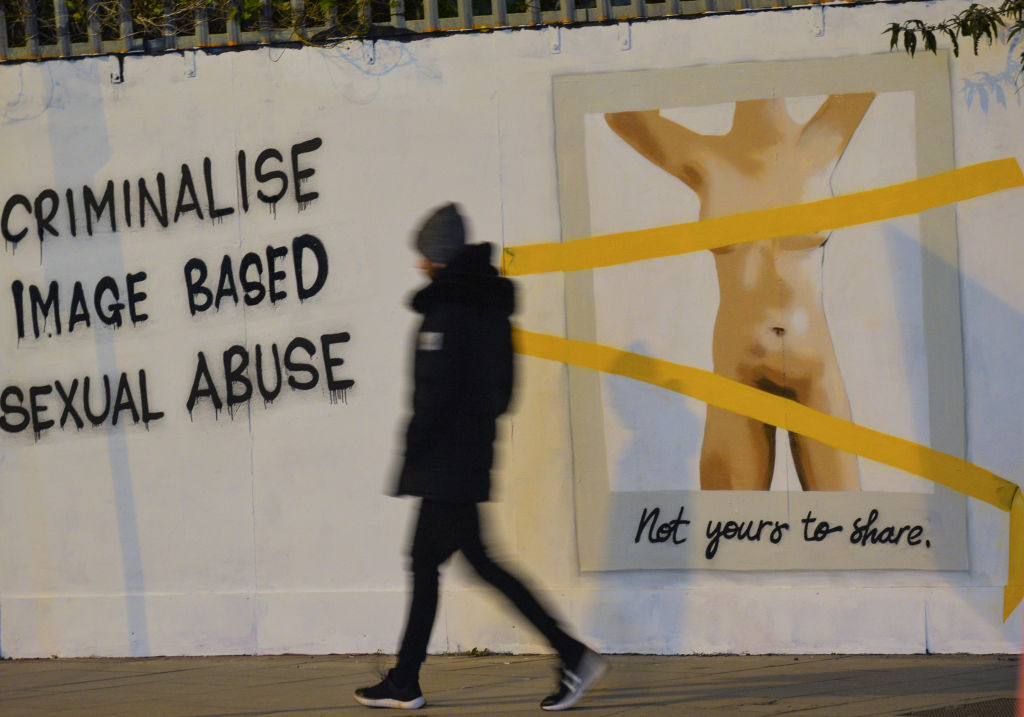Almost every U.S. state has enacted criminal laws to protect victims from image-based sexual abuse. Though well-intentioned, the vast majority of them criminalize just a fraction of the behavior they should.

Susanna Gibson’s losing bid for the Virginia House of Delegates has largely retreated from the headlines as we enter January and newly elected legislators are sworn in at statehouses around the country. What most people will likely remember about her candidacy, if they remember it at all, is that Gibson was involved in a “sex tape” scandal. The reality is that Gibson was a victim of what is colloquially (and inaccurately) referred to as “revenge porn”—a term that is negatively influencing how this destructive criminal behavior against women is perceived and punished by society.
The term “revenge porn” gives the mistaken impression that the crime should be defined based on whether the perpetrator intended harm.
Videos of Gibson having sex with her husband were anonymously distributed before the election without her consent. The videos were reportedly from a voyeuristic website where members livestream sex acts for other members, who can reward the performers with “tips.” The website permitted members to view the videos but prohibited their recording or distribution. Nevertheless, someone recorded the images and distributed them online, both without Gibson’s permission and in violation of the website’s terms of use.
In condemning this behavior, Gibson referred to this violation as “revenge porn,” as many of us do. But “revenge porn” is a misnomer. Not only is the term inaccurate and demeaning to its victims, but using it trivializes the severity of the crime, leading states to pass laws that do not properly protect victims. Most laws criminalizing the non-consensual distribution of intimate images mistakenly focus on the mindset or intent of the perpetrator—the “revenge” in revenge porn.
Regardless of the intent of the perpetrators, the crime is the violation of the privacy of victims, many of whom suffer serious and irreparable harm as a result. Up to 80 percent of these incidents do not involve an intent to injure, harass or mistreat the person depicted in the image. Despite no intent to harm, many victims suffer serious and irreparable harm as a result of photos or videos being made public, with consequences including depression, job loss, humiliation among friends and family, and even suicide.
Susanna Gibson’s sex life might be unusual. Or it might be incredibly ordinary. No matter what others might think of her choice to conduct her sex life as she has, Gibson took care to keep it private and shared it only within a prescribed group of her own choosing, by using a website with terms and conditions that required all participants to be consenting adults and forbade any reproduction of the content.
The videos were released without her permission by someone who knew or reasonably should have known that Gibson did not give her consent for them to be shared. The law should not require additional proof that the perpetrator wanted to cause her harm.
Fifty jurisdictions in the United States (48 states, plus Washington, D.C. and Guam) have enacted criminal laws to protect women and other victims from image-based sexual abuse. Although these laws may be well-intentioned, our research has found that the vast majority criminalize just a fraction of the behavior they should. The problem is that the laws require the prosecution to prove that the perpetrator intended to harm the person depicted in the images. In Virginia, where Gibson lives, the law requires that the offending photos or videos be released “with the intent to coerce, harass or intimidate.”
Gibson described the timing of the release as “designed to humiliate” her. She may be right about that. Should Gibson’s perpetrator be caught and charged under the Virginia law, their behavior could be considered an attempt to harass her in her quest for the state legislature. It is even possible that, as more facts come to light, it could be proven that the perpetrator’s motivation was to coerce her or intimidate her out of running for office.
But irrespective of the motivation for releasing the videos—the details of which are not entirely clear—it does appear that they were released in violation of the website’s terms and conditions and, therefore, without Gibson’s consent. This should be the basis of the crime: that the videos were released without her permission by someone who knew or reasonably should have known that Gibson did not give her consent for them to be shared. The law should not require additional proof that the perpetrator wanted to cause her harm.

By criminalizing behavior only where it can be proven that the motivation was to intentionally “coerce, harass or intimidate,” to use Virginia’s terms, such statutes fail to protect the majority of victims.
Such laws, for example, would not protect the victims of Rep. Matt Gaetz, who reportedly shared naked photos of women he had slept with as a point of pride, according to legislators to whom he showed the pictures. Nor would these laws protect the women whose intimate photos were passed around among police officers for their enjoyment after the women were stopped on suspicion of DUI.
Indeed, written in this way, the laws would not address any situation where the perpetrator distributed the offending images for any purpose other than an intent to harm the person depicted—including amusing themselves, entertaining their friends or any of the myriad other reasons that anyone has for doing anything in this life.
Regardless of the motivation behind the release of Gibson’s intimate images without her permission, the situation is instructive as to how to craft a law that offers effective protection to survivors of image-based sexual abuse.
States should eliminate the requirement of intent to harm from these laws because, no matter what a perpetrator’s reason for distributing the images, the person depicted is profoundly harmed by their release. Instead, the crime should be defined by the violation of the privacy of the victim, and laws should focus simply on the harm suffered by the victim and the absence of consent from the person depicted.
Up next:
U.S. democracy is at a dangerous inflection point—from the demise of abortion rights, to a lack of pay equity and parental leave, to skyrocketing maternal mortality, and attacks on trans health. Left unchecked, these crises will lead to wider gaps in political participation and representation. For 50 years, Ms. has been forging feminist journalism—reporting, rebelling and truth-telling from the front-lines, championing the Equal Rights Amendment, and centering the stories of those most impacted. With all that’s at stake for equality, we are redoubling our commitment for the next 50 years. In turn, we need your help, Support Ms. today with a donation—any amount that is meaningful to you. For as little as $5 each month, you’ll receive the print magazine along with our e-newsletters, action alerts, and invitations to Ms. Studios events and podcasts. We are grateful for your loyalty and ferocity.





